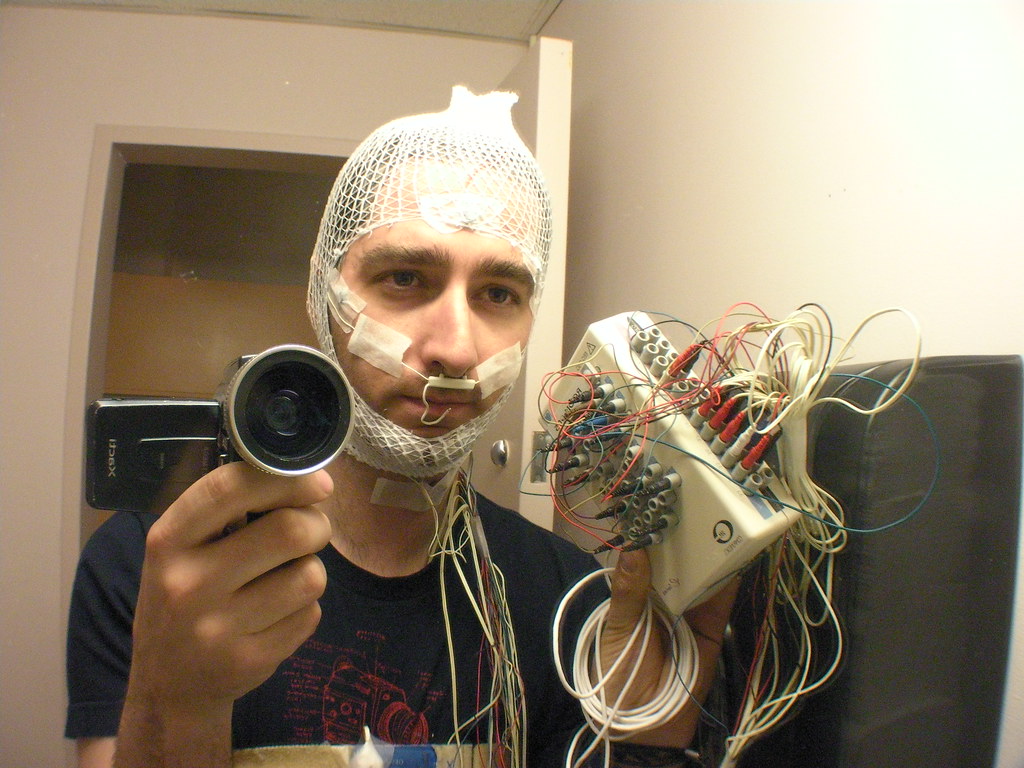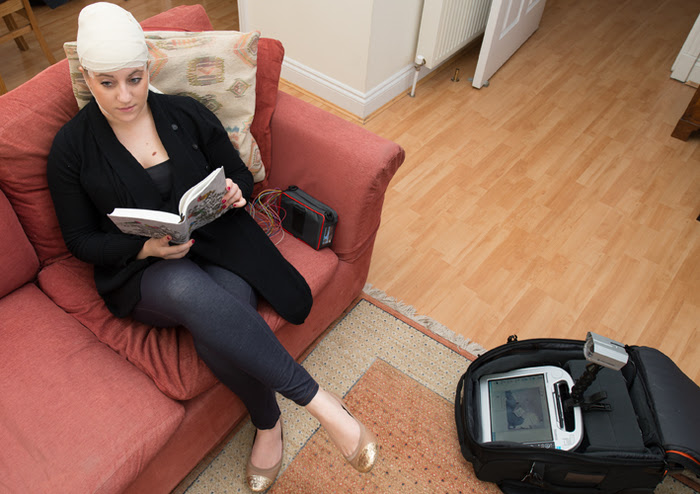

Patients and caretakers are educated on push button activation to mark potential events on AEEG detailing the time and description of an event in a diary. Preamplifiers are connected to the recording device and are worn around the waist or over the shoulder. Electrodes are connected to a head mounted preamplifier that digitizes and multiplexes data. The minimum number of recording electrodes for standard EEG is 16, however, 25 electrodes has been recommended for long-term EEG monitoring in adults and children to provide better coverage of the anterior and inferior-basal regions of the temporal lobes. Current technology used for AEEG is essentially the same used for inpatient VEM, capable of reviewing, transferring, and interpreting large volumes of data. Large digital storage capacities are now available to store, retrieve, and modify data from the Cloud.

Spike and seizure detection algorithms, artifact reduction, push-button activation to facilitate event recording, and quantitative EEG are available for trend analyses. High sampling rates of 512 Hz and bit depth of at least 16-bits for analogue to digital conversion are available in most systems.
#Ambulatory eeg portable
Today, portable lightweight AEEG devices (1 pound) can record up to 36 channels of continuous EEG with or without video. Intermittent AEEG recording (i.e., 15 s every 10 min over 24 h) selected targeted samples of EEG and streamlined interpretation. Video was added to the audio signal and eight channel continuous EEG recorders and playback devices became commercially available prompting widespread application in the clinic. By the 1980s, Bridgers and Ebersole were using AEEG recorders for clinical use with channels available for time display, event markers, and ECG channel. Three years later, Quy modeled AEEG preamplifiers so they were worn on the head, improving the signal to noise ratio. By the mid-1970s, Ives and Wood modified AEEG recorders that could be worn over the shoulder or around the waist. Marson and McKinnon developed a four channel portable EEG device in 1972 for continuous recording using ¼ inch audiotape drawn from the success of the music industry. The development of AEEG was inspired by Holter 50 years ago to assess dynamic changes in the electrocardiogram (ECG) of patients in an ambulatory setting. On the other hand, ambulatory video-EEG (AV-EEG) is an effective diagnostic alternative to inpatient VEM, that at our center has risen in its use to offset the loss of inpatient VEM availability (personal communication, WOT ). Īttempts to fill the gaps created by EMUs that closed are unable to be overcome by standard EEG due to the brevity that obviates event capture. In Spain, a study of 255 epilepsy patients reported 15% had a delay in performance of epilepsy-related tests during pandemic lockdown. Furthermore, a survey of 47 epilepsy centers across 22 countries in Europe reported that inpatient VEM was restricted due to the COVID-19 pandemic.

For example, in Italy, 206 sites saw a reduction of 76% ± 20% in EEG procedures performed. The number of hospital-based procedures fell during the pandemic. Healthcare workers involved in patient care in an EMU risk potential exposure to infection with Coronavirus (SARS-CoV-2) or its variants. Telemedicine has reduced the safety risk of viral exposure to patients and their families. Because of the COVID-19 pandemic, hospitals across the United States restricted or cancel admissions for VEM in hospital-based epilepsy monitoring units (EMUs). However, hospitalization, time-constraints, insurance approval, financial and transportation issues are practical limitations. Inpatient video-EEG monitoring (VEM) is the diagnostic gold standard for patients suspected of epilepsy. In this article we highlight the benefits of AEEG as an alternative to diagnostic inpatient VEM during the paradigm shift to mobile heath forced by the Coronavirus. Application of seizure detection algorithms and Cloud-based storage with real-time access provides connectivity to AEEG interpreters during prolonged “shut-down”. Technological advances in AEEG using miniaturized hardware and wireless secure transmission have evolved to small portable devices that are perfect for people forced to stay at home during the pandemic. Prolonged audio-visual video-EEG capability can record events and epileptiform activity with quality like inpatient video-EEG monitoring. AEEG has high yield compared to standard EEG. As COVID-19 exposures and deaths continues to surge in the United States and around the world, other types of long-term EEG monitoring have risen to fill the gap and minimize hospital exposure. The COVID-19 pandemic forced temporary closure of epilepsy monitoring units across the globe due to potential hospital-based contagion.


 0 kommentar(er)
0 kommentar(er)
